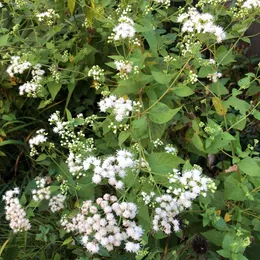

Top 20 Most Common Weeds in Kansas
In Kansas, United States, the fertile prairies and fluctuating climate serve as a breeding ground for various garden weeds. Among the aggressors, Pokeweed, Poison ivy, and Garlic mustard stand as primary culprits, infiltrating gardens with tenacity. Gardeners often grapple with their pervasive nature, which poses ongoing threats to both manicured landscapes and native ecosystems.

























North America > United States > Kansas
More Plants in Kansas

Most Common Toxic Plants

Most Common Flowers

Most Common Flowers of Spring

Most Common Spring Fruits

Most Common Fruits

Most Common Trees

Most Common Tall Trees

Most Common Flowers of Winter

Most Common Plants
In Kansas, you can find Pokeweed, Virginia creeper, Amur honeysuckle, Mulberry, Eastern redbud, and more! There are 50 types of plants in total. Be sure to look out for these common plants when you’re walking on the streets, in parks, or public gardens.